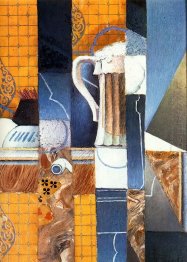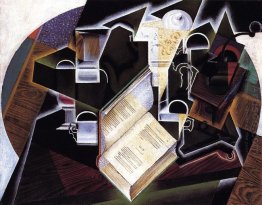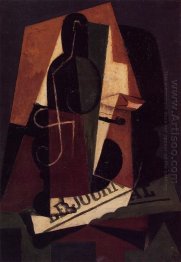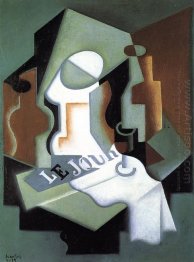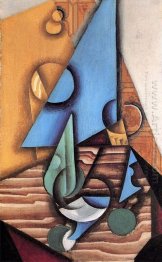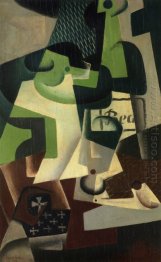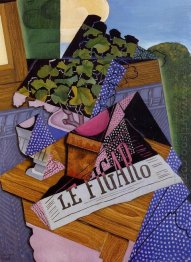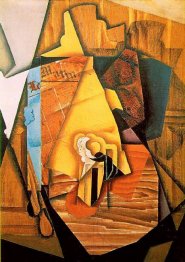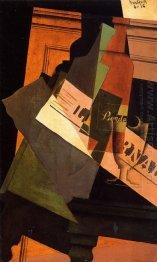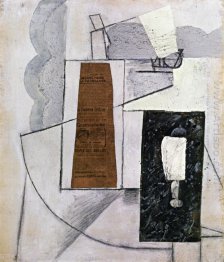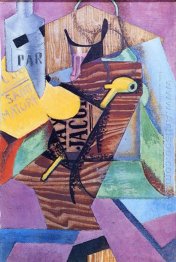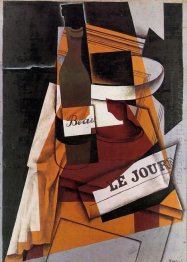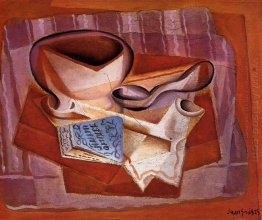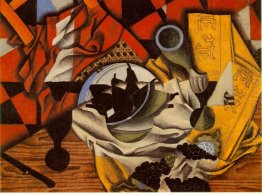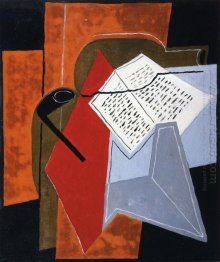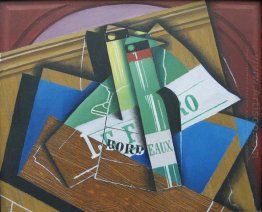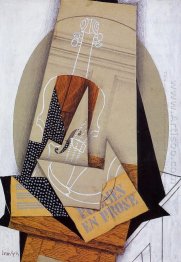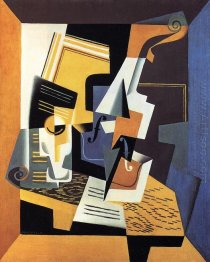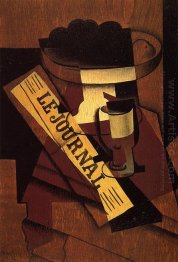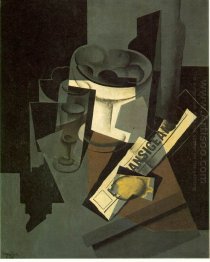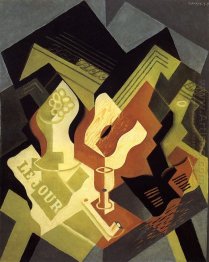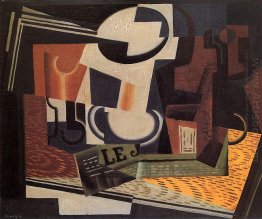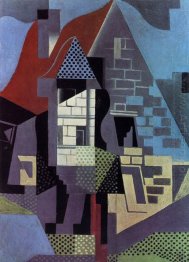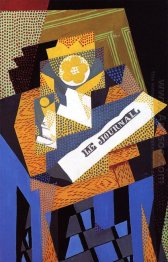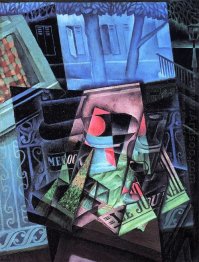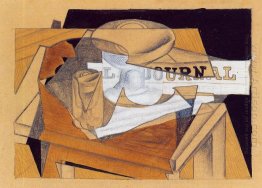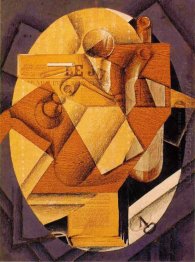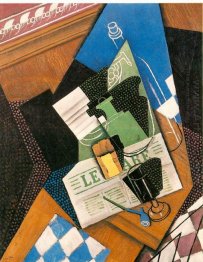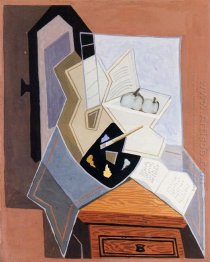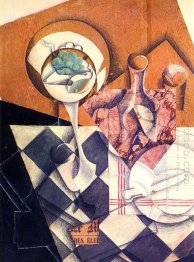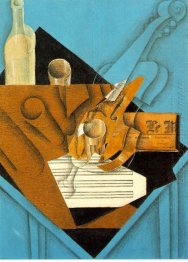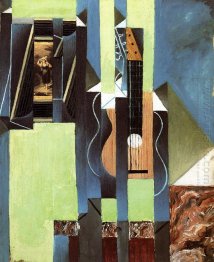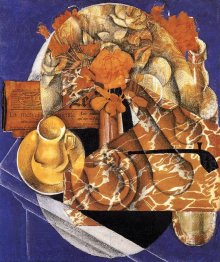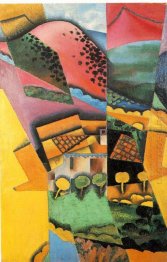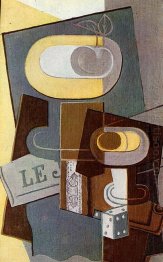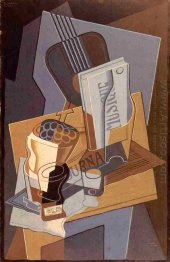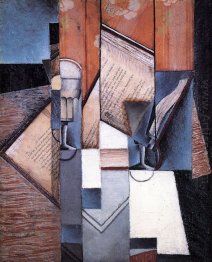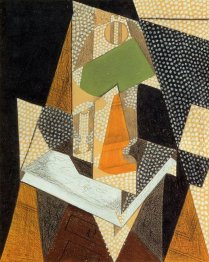Synthetic Cubism
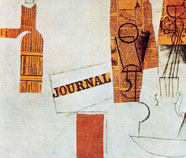
Synthetic Cubism grew out of Analytic Cubism. It was developed by Pablo Picasso and Georges Braque and then copied by the Salon Cubists. Picasso and Braque discovered that through the repetition of "analytic" signs their work became more generalized, more geometrically simplified and flatter. Overlapping planes sometimes shared one color (passage). Real pieces of paper replaced painted flat depictions of paper. Real scores of music replaced drawn musical notation. Fragments of newspaper, playing cards, cigarette packs, and advertisements that were either real or painted interacted on the flat plane of the canvas as the artists tried to achieve a total interpenetration of life and art.
The invention of collage, which integrated signs and fragments of real things, is one aspect of "Synthetic Cubism." Picasso"s first collage Still Life with Chair Caning was created in May of 1912 (Musée Picasso, Paris). Braque"s first papier collé (pasted paper) Fruit Dish with Glass was created in September of 1912 (Boston Museum of Fine Arts). Synthetic Cubism lasted well into the Post-World War I period, influencing later 20th-century artists Jacob Lawrence, Romare Bearden and Hans Hoffman, among many others.
Synthetic Cubism"s integration of "high" and "low" art (art made by an artist combined with art made for commercial purposes, such as packaging) can be considered the first Pop Art.
The word "synthesis" in relation to Cubism can be found in Daniel-Henri Kahnweiler"s book The Rise of Cubism (Der Weg zum Kubismus), published in 1920. Kahnweiler, who was Picasso and Braque"s art dealer, wrote his book while in exile from France during World War I. He did not invent the term "Synthetic Cubism."
The terms "Analytic Cubism" and "Synthetic Cubism" were popularized by Alfred H. Barr, Jr. (1902-1981) in his books on Cubism and Picasso. Alfred Barr was the first director of the Museum of Modern Art, New York.





